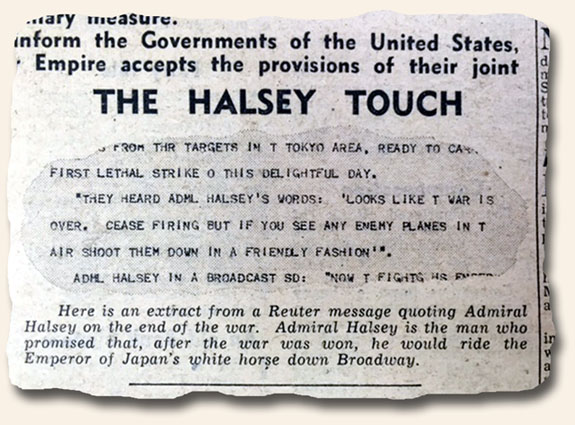Bad Luck vs. Fate – The Sullivan Brothers…
October 13, 2023 by GuyHeilenman · Leave a Comment
Today is Friday – more specifically, Friday the 13th. I’m not superstitious or a fatalist, and I’m not quite sure what I think about “the luck of the Irish”, and even if it does exist on some level, whether or not Irish-Americans have it (or is it washed away in the salt water of Atlantic during transit. Quite honestly, I try to limit my exposure to bad news. However, a few weeks ago one of our staff brought me a 1943 newspaper containing an article regarding the dreadful story of the Sullivan Brothers during WWII. While the event was immortalized in the movie “The Fighting Sullivans”, and inspired drama “Saving Private Ryan”, there is no better way to capture this horrible moment than reading it as it was reported in 1943. A clip of the article is shown below, and more may be viewed through the link: Five Sullivan Brothers Killed in WWII Action. Was it fate, bad luck (of the Irish?), or something entirely different? Regardless, one thing is for certain, it was horribly tragic!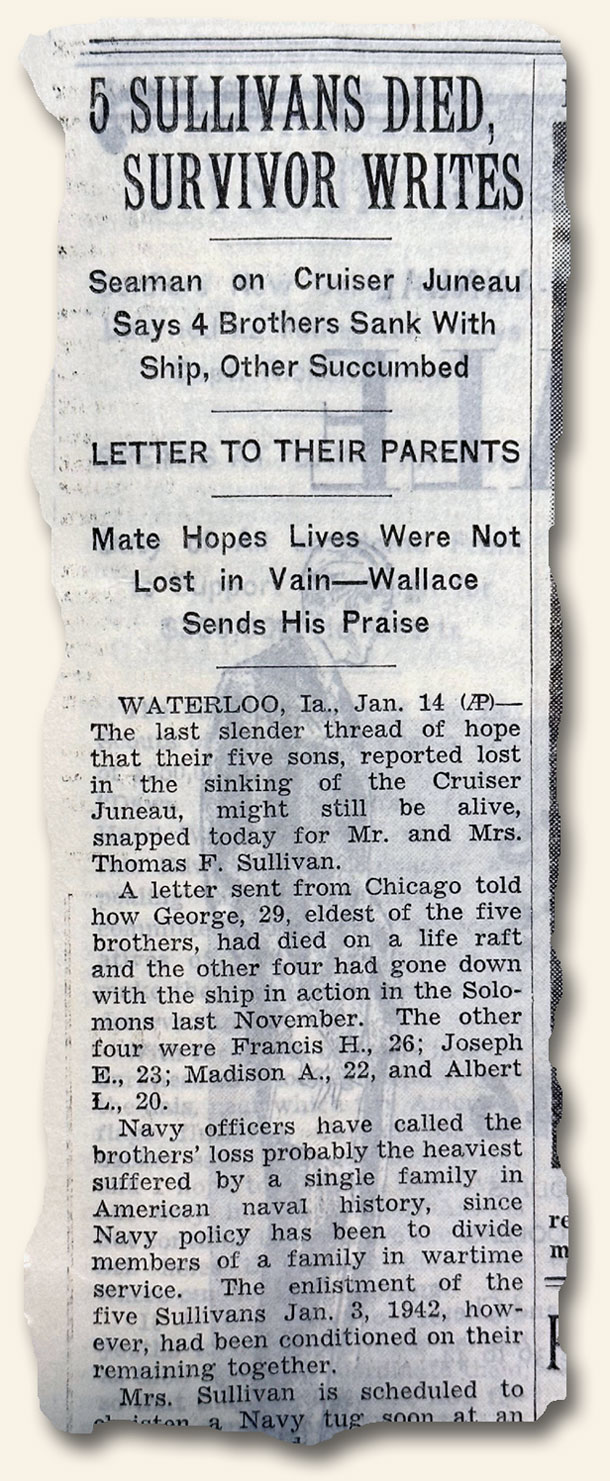
Dramatic Headlines Speak for Themselves… Hitler attacks Poland – WW2 begins!!!
September 8, 2023 by GuyHeilenman · Leave a Comment
The best headlines need no commentary. Such is the case with the New York Journal American, September 1, 1939, which had a pre-death report on the Hitler’s attack on Poland in 1939:
“GERMAN ARMY ATTACKS POLAND…“
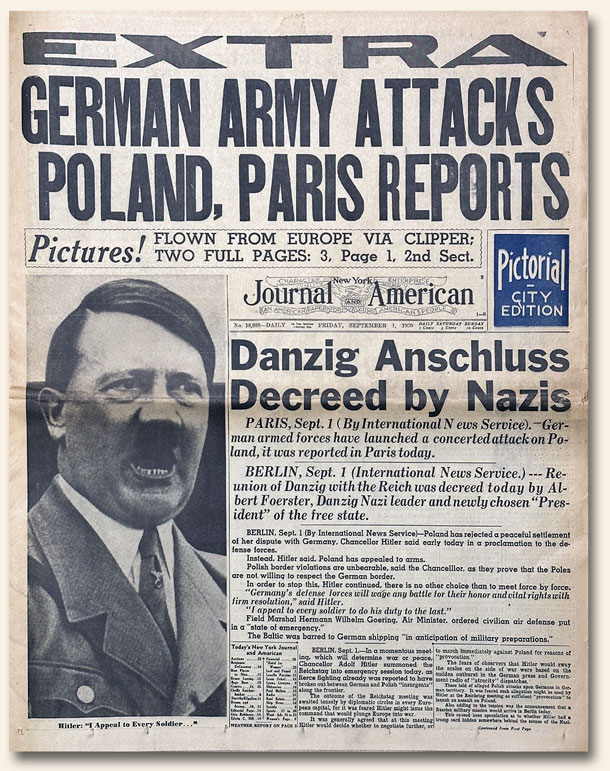
The Village Voice, U2, Hitler – The sky is falling!
December 10, 2021 by Stephanie Williams · Leave a Comment
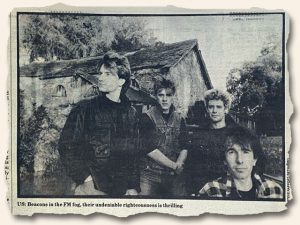 Many children of the 60’s, 70’s and 80’s grew up with the threat of nuclear war hanging over their heads. From “Dr. Strangelove” to “The Day After” – the annual death-march of dystopian movies capsulized the vague dread that everything could end at any moment; or worse still, that the end could begin at any moment — with all of the indeterminate, lingering fallout and devastation. Discussions took place about whether it would be better to live close to a big city that was bound to be a target and promised immediate annihilation, or further out where radiation sickness might destroy. It was a gruesome topic made more appalling by resigned acceptance.
Many children of the 60’s, 70’s and 80’s grew up with the threat of nuclear war hanging over their heads. From “Dr. Strangelove” to “The Day After” – the annual death-march of dystopian movies capsulized the vague dread that everything could end at any moment; or worse still, that the end could begin at any moment — with all of the indeterminate, lingering fallout and devastation. Discussions took place about whether it would be better to live close to a big city that was bound to be a target and promised immediate annihilation, or further out where radiation sickness might destroy. It was a gruesome topic made more appalling by resigned acceptance.
The pop culture of that era seemed to feed one of two perspectives: distraction or depth. Such publications as The Village Voice articulated both positions. The May 24, 1983 review of U2’s album “Peace with Honor”, contains an editorial observation that has very little to do with the music.
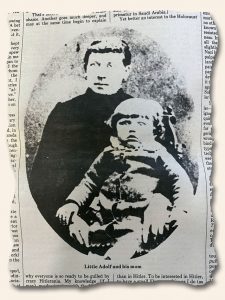
“Though I was born one week after the atomic bomb was dropped on people, I have always expected to live out my appointed days. But recently it’s been evident that large numbers of teenagers, adolescents, even children now fully expect that their appointments will be cancelled by person or persons unknown, so a vast, anti-militarist ground swell isn’t much of a surprise.”
Note: To add to the uneasiness of the era, a few pages earlier The Voice included an article highlighting the life of Adolf Hitler.
Whether or not you agree with the distinct bias of The Voice, it certainly holds an important value as being an accurate representation of the angst of the generation — and it did so for a few generations.
WW2 Era Newspapers Found In The Attic… Are They Worth Anything?
October 25, 2021 by GuyHeilenman · Leave a Comment
Perhaps the most common inquiry we receive concerns newspapers from World War II found in parents’ attics. As generations pass it is incumbent upon their children to sort out what is of value and what is not.
The list which follows is a guide for determining what to keep and what to dispose.
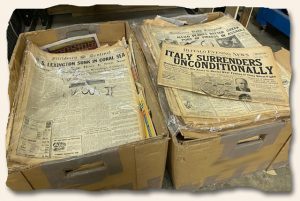 In general, there are only about 15 events which are sufficiently notable to excite most collectors. Those event not included on the list are considered “generic” or “atmosphere” issues which, although reporting much on the war, are generally not significant enough to draw the attention of the serious collector.
In general, there are only about 15 events which are sufficiently notable to excite most collectors. Those event not included on the list are considered “generic” or “atmosphere” issues which, although reporting much on the war, are generally not significant enough to draw the attention of the serious collector.
It’s worth noting that graphic appeal tends to trump title. Example: the New York Times remains one of the more notable newspapers of the 20th century, but their headlines were typically conservative, lacking any drama, flash, or graphic appeal. Small town newspapers with dramatic graphic appeal will be more desired.
Issues which fit the events and criteria noted below could well have collector value. Feel free to send the exact title and date of each along with photos of the entire front pages (showing margins) to: info@rarenewspapers.com
Note: Perhaps the mostly commonly reprinted issue of the war is the Honolulu Star-Bulletin of Dec. 7, 1941. Most of the issues on the market are the common reprint, still sold at the souvenir stand at the U.S.S. Arizona Memorial in Honolulu. See this blog post on how to tell a reprint from the genuine issue.
Top 15 events of World War II:
1) Germany invades Poland, 9/1/1939
* This event marked what many regard as the start of the war. Although not an American
event, most collectors want this report among their holdings.
2) Attack on Pearl Harbor, 12/7/1941
* Japan’s naval air force attacks military bases on Oahu, Hawaii, thus thrusting the United States into the war. The more dramatic and shocking the wording in a banner headline the better.
3) U.S. Declares war against Japan, 12/8/1941
* Just one day after the attack on Pearl Harbor the United States officially declares war against Japan, formalizing America’s entry in the war in the Pacific.
4) U.S. declares war against Germany & Italy, 12/11/1941
* The United States enters the war in Europe as well, just 3 days after declaring war against Japan.
5) Battle of Midway, 6/4-7/1942
* Just six months after Pearl Harbor the United States scores a major naval victory in the Pacific against Japan. Being a multi-day event, collectors would pursue the best headline near the end of the battle reporting the American victory.
6) D-Day, 6/6/1944
* With Axis forces controlling much of Western Europe, this day marks the offensive of the Allied forces in re-taking conquered countries. The word “Invasion” is desired somewhere within the headlines.
7) Battle of the Bulge, 12/16/1944
* This was the last major German offensive on the Western Front taking place from December 16, 1944 to January 25, 1945. Issues near the end of the battle which reported an Allied victory would be more desired.
8) Photo of the flag raising on Mt. Suribachi, Iwo Jima, 2/23/1945
* If there was a single, iconic photo of American successes in the Pacific it would be this Pulitzer Prize-winning photo. Many newspapers included it in their editions of a day or two later, many did not. Better if the photo is on the front page, as many newspapers—when using it—did so on an inside page.
9) Death of FDR, 4/12/1945
* Although arguably not a true war event, the death of the President who was Commander-In- Chief of the military through almost the entirety of the war cannot be missed as a notable event.
10) Death of Hitler, 4/30/1945
* Hitler’s suicide deep inside a Berlin bunker essentially ended the war in Europe as just days later terms of surrender were agreed to by Nazi officials. Most newspapers reported his death on May 2, and a few published the Nazi propaganda report that the Fuehrer: “…has fallen in battle at the head of the heroic defenders of the Reich capital…”. The blunt words: “Hitler Dead” are more dramatic than “Death of Hitler”.
11) V-E Day, 5/7/1945
* The official end of the War in Europe. This was one event where newspapers often used patriotic embellishments to celebrate the victory, some multi-colored, some incorporating war photos within letters, etc.
12) Atomic bomb drop on Hiroshima, 8/6/1945
* With the war in the Pacific still raging, the first atomic bomb ever deployed was dropped over the city of Hiroshima. Some newspaper down-played the horrific affects of the bomb. More desired are headlines which more accurately reported the incredible devastation.
13) Atomic bomb drop on Nagasaki, 8/9/1945
* Just 3 days after Hiroshima, the second atomic bomb was dropped, which prompted the Japanese to pursue surrender terms. Again, bluntly accurate reporting in the headline is desired over a more subdued report.
14) V-J Day, 8/15/1945
* Terms for surrender were agreed upon, and the world announced the end of World War II. Much like V-E Day, newspapers typically became very creative in patriotically celebrating the end of the war. The more creative the front page the better.
15) Formal surrender of Japan, ending WWII, 9/2/1945
* Signing of the surrender terms happened on board the U.S.S. Missouri in Tokyo Bay. Although most collectors would consider V-J Day as the end of the war, and in many respects it was, collectors often pursue this event as well.
There are also 2nd-tier items which could be collectible, but the extent of coverage and graphic appeal are paramount, and in some cases the title/publisher is essential. The list below contains such items, and will be updated from time-to-time.
Pre-War
Nuremberg Laws enacted, 9/15/1935
Jews no longer permitted to own property (various)
Opening of Concentration Camps (various)
Kristallnacht, 11/9-10/1938
During The War
Fake Report of attack on Los Angeles, “Battle of Los Angeles” (2/25/1942)
Bismarck Sunk, 5/27/2941
Star of David Badge, 9/7/1941
Doolittle Raid , 4/18-20/1942
USS Lexington Lost, 6/12/1942
Bataan Death March, 1/28/1944
JFK PT Boat, 6/11/1944
MacArthur returns to the Philippines, 10/20/1944
Post-War
USS Missouri – Peace Treaty Signed, 9/2/1945
Louis Zamperini Found, 9/9/1945
Patton’s Death, 12/21/1945
They Put It In Print… How to hate – 1941…
September 22, 2019 by GuyHeilenman · Leave a Comment
As we were searching through our issues from 1941 looking for new WWII content, to our great dismay we discovered a article on page 3 of the San Francisco Chronicle dated November 15th headed: “Goebbels Tells Germans How To Hate Jews”, which was followed by his ten “reasons” to hate them. There are some who wish to ignore and/or deny the existence of the hatred which ran rampant during this time in world history, but thanks to the S.F. Chronicle, they put it in print:
Snapshot 1945… America at Iwo Jima – a melting pot forged in blood…
August 26, 2019 by GuyHeilenman · Leave a Comment
The following snapshot comes from the Minneapolis Sunday Tribune, dated April 22, 1945, which shouts of America as the world’s melting pot in a thousand words… and perhaps a million drops of blood.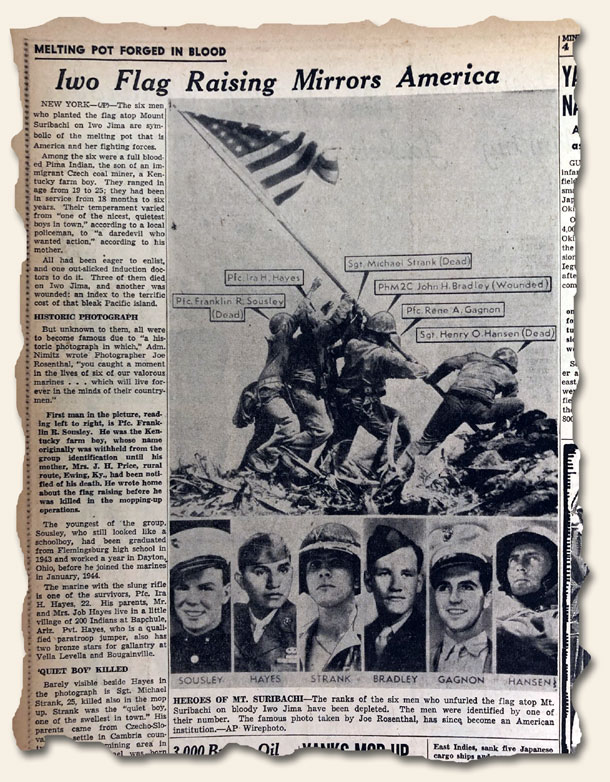
Snapshot 1914 – the first warship passes through the Panama Canal…
June 25, 2019 by GuyHeilenman · 2 Comments
The following snapshot comes from the Boston Evening Transcript dated August 18, 1914, which announces the first-ever warship making its way through the Panama Canal. Quite historic.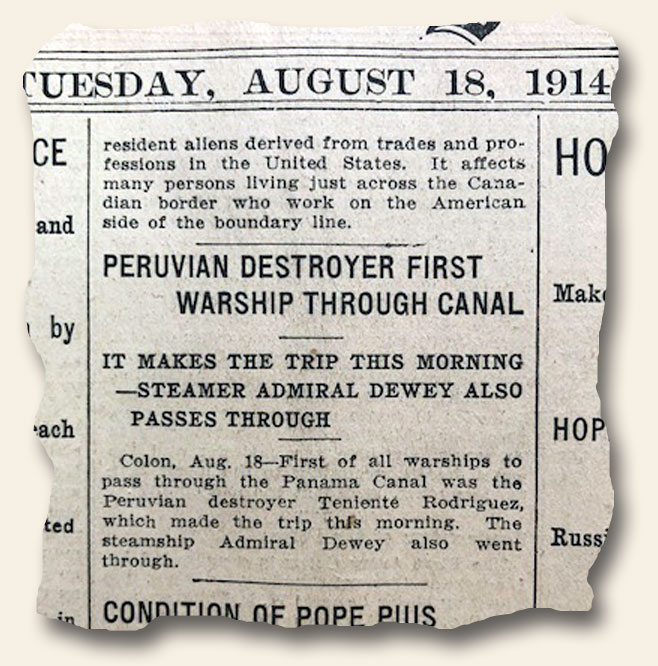
Snapshot 1934… Adolf Hitler declares he will not go to war!
March 12, 2019 by GuyHeilenman · Leave a Comment
The following snapshot comes from the Chicago Daily Tribune dated August 6, 1934, which features Adolf Hitler’s Declaration that “War Means Ruin…Will Fight Only If Attacked.” At least he got the 1st part right.
Great Headlines Speak For Themselves… the Hindenburg tragedy!
August 11, 2016 by The Traveler · 2 Comments
The best headlines need no commentary. Such is the case with the NEW YORK AMERICAN, May 7, 1937: “HINDENBURG EXPLODES AT LAKEHURST; 35 DEAD“:
The put it in print… Killing them with kindness?
July 11, 2016 by TimHughes · Leave a Comment
The August 15, 1945 “Evening Standard” newspaper from London, on the day they reported the surrender of Japan to end World War II, included an extract from a Reuter’s message quoting Admiral Halsey on the end of the war: “…Looks like the war is over. Cease firing, but if you see any enemy planes in the air shoot them down in a friendly fashion.”